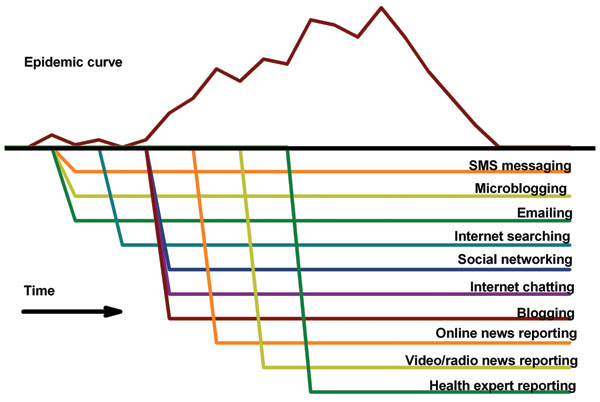Volume 15, Number 5—May 2009
Synopsis
Use of Unstructured Event-Based Reports for Global Infectious Disease Surveillance
Figure

Figure. Hypothetical timing of informal electronic sources available during an outbreak. SMS, short message service.
Page created: December 16, 2010
Page updated: December 16, 2010
Page reviewed: December 16, 2010
The conclusions, findings, and opinions expressed by authors contributing to this journal do not necessarily reflect the official position of the U.S. Department of Health and Human Services, the Public Health Service, the Centers for Disease Control and Prevention, or the authors' affiliated institutions. Use of trade names is for identification only and does not imply endorsement by any of the groups named above.